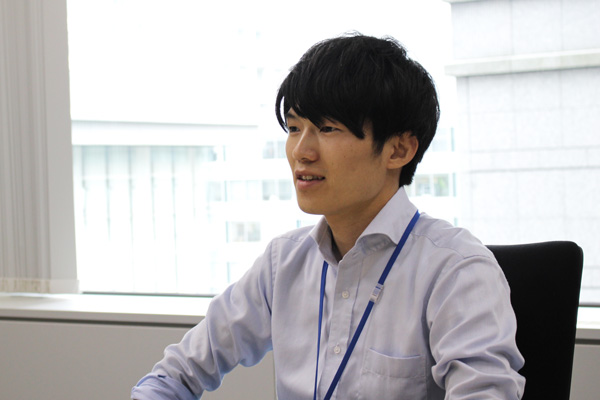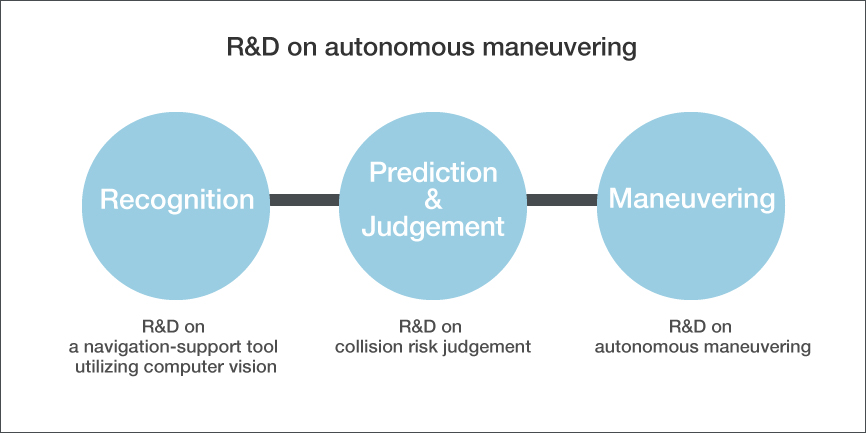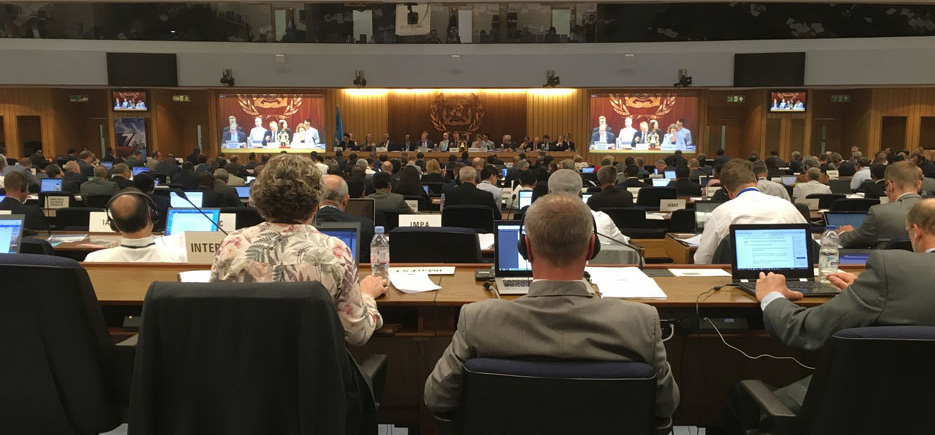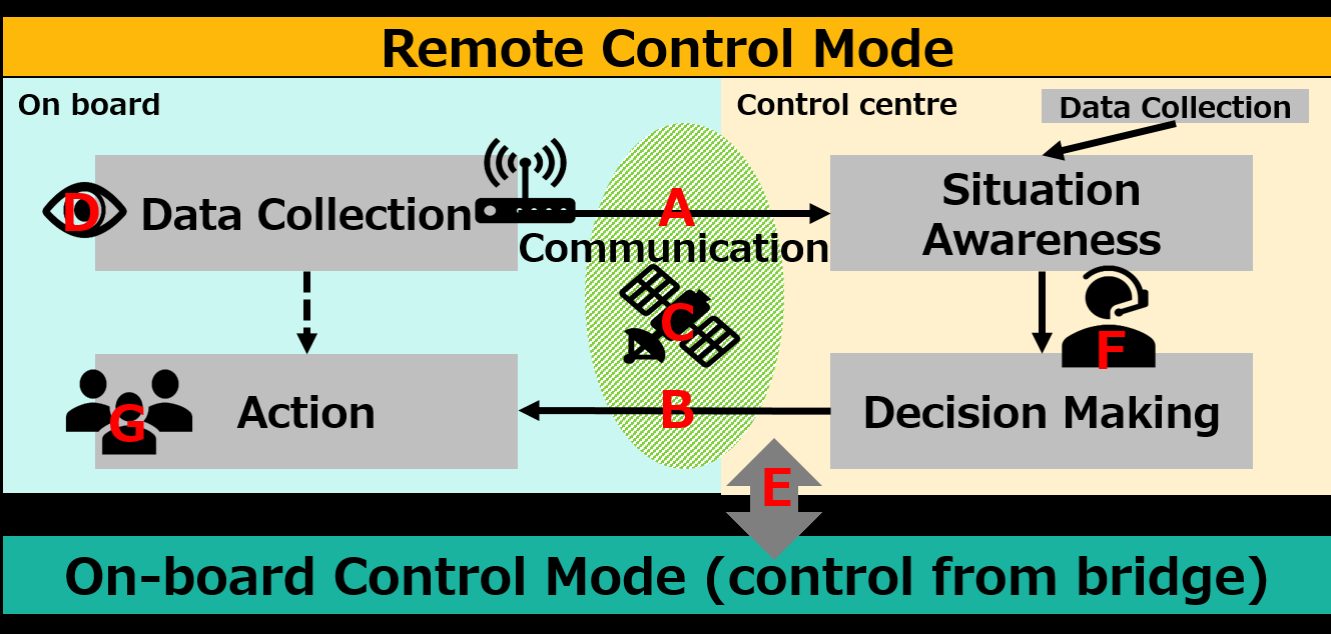MTI Journal
MTI Journal.05
Considering the Future of
the Shipping Industry
Through Autonomous Ships
Takuya Nakashima
Researcher, Maritime Technology Group*
*The job title is as of June 13, 2018
I was seconded to MTI in June 2017 and have taken part in some projects related to autonomous ships. The whole shipping industry is paying much attention to the new concept and approaching it by both technology and regulation aspects. I have studied to deepen my knowledge of the maritime industry, which might seem hard but is enjoyable and could be a benefit as I can consider it from a third-party perspective.

Autonomous = Unmanned?
What do you imagine when you hear the term autonomous ships? Compared to autonomous driving of cars, the situation is a bit complicated. What to automate is, of course, the work that humans conduct, but when it comes to large-scale vessels, there are more than 20 crew members on board, each with a special role. There are many jobs such as planning voyages, avoiding ships, docking and undocking ships, machine maintenance, cargo management, and emergency response, and the condition will change greatly according to what we will target to automate. In addition, various operation styles can be thought of according to the kind of vessels – such as merchant ships including tankers and containerships, survey ships, fishing boats, and patrol boats – the sea area and environment, and the extent to which humans are involved.
Further, you might imagine that autonomous ships are unmanned, which, however, is a partial answer. For instance, an autonomous coastal ship that is to be developed by the Norwegian fertilizer company Yara is fully electric and is reputed to be unmanned because the routine maintenance work can be omitted and, in an emergency, support from the shore is expected. On the other hand, it will be a far-distant future for realizing unmanned conditions for oceangoing ships, as it is difficult to use only electricity as the power for such long distances, and there is a high hurdle for technologies and regulations to cover the cost. Thus, it seems that, as with other buzzwords such as AI and big data, the term autonomous ship has spread despite its lack of a concrete definition.
MTI’s approach toward autonomous ships
We consider autonomous ships an extension of activities such as reducing crew workloads and optimizing vessel operations. So, the automation itself and reducing crew numbers are not the goal. As we continue to develop technology that will contribute to improving the current work, autonomous ships could finally be realized.
At the same time, we progressively accept the challenges posed by new themes, such as cybersecurity, which emerge as the technology develops. Our work in these areas can also be considered a tackling of issues involving connected industries,1 a concept that the Japanese government aims to realize.

Development of an automatic collision-avoidance system
As one of the R&D projects, we have worked with several universities on a project for developing an auto-navigation program utilizing artificial intelligence. For the program to be used during actual voyages, we must make it able to suggest optimal routes considering not only avoiding other ships but also various elements such as rules including COLREGs,2 hydrographical and meteorological conditions, maneuverability, and fuel efficiency. Deck officers navigate ships by comprehensively judging each element based on their experience. Further, officers must have a perspective to change tacit knowledge to explicit knowledge.
Regarding the situation that the automatic collision-avoidance system has been developed worldwide, including major European manufacturers, we also need to consider the safety and reliability of various algorithms from the user perspective rather than the developer perspective.
In the first place, if we target introducing the system to actual voyages, we are supposed to get reliable input data before considering any autonomous ship-maneuvering judgement. In fact, there’s a huge hurdle in getting machines – which utilize information from AIS (Automatic Identification System), radar equipment, and cameras – to cover the watchkeeping task currently done by humans. As described here, the MTI’s working environment is great for researchers to be able to conduct such practical R&D tailored to introduction at actual sites.
Participation in MSC99
We follow legal trends that will be the premise for realizing technologies, and so I joined the IMO Maritime Safety Committee’s 99th session (MSC99) held from May 16 to 25, 2018, as a member of the Japanese delegation. From this session, they started consideration toward reviewing international treaties, such as SOLAS3, COLREGs2, and STCW4, to cope with the emergence of autonomous ships, which is called MASS (Maritime Autonomous Surface Ship) at the IMO. As suggested above, because there was no common understanding of what MASS is, and some countries and organizations wanted to promote the development and some didn’t, the discussion sometimes went off the rails. Nevertheless, the discussion led to the draft definitions of MASS and the automation level to start the regulatory scoping exercise.

MSC99
It is often said that the shipping industry is behind in the field compared to the others, but in the first place, the situation is comparably harder than the on-land environment. In addition to the influence on the hulls and machinery by sea water and hull fluctuations, the at-sea communication environment cannot be compared to the on-land environment. I think that it is a responsibility and contribution to society for companies like NYK and MTI – which are familiar with the sea environment’s severity, the cultural differences by countries and ports, and the rules peculiar to the industry – to lead the actual R&Ds and rulemaking.

Summary of issues on rules related to autonomous ships (issues to be noted assuming oceangoing remote maneuvering)
A big turning point in the shipping industry
Obviously, various stakeholders are involved in shipping – not only shipping companies, but also shipowners, shipyards, nautical-equipment manufacturers, engine manufacturers, port administrators, and seamen’s unions are involved. In addition, we must consider the relation with shippers, receivers, and land transporters. It is certain that some people feel averse to the concept of autonomous ships. But it is also certain that some people feel a sense of crisis in the industry’s current situation and expect the ripple effect that the concept will bring.
MTI seems a unique company even from a global perspective, as there are navigation officers and engineers who know the actual sites, and there are professionals in hull design and performance, navigation equipment, and, further, in land transportation. I am involved with this theme under the notion that R&D must even consider how to smoothly bring superior technologies to the introduction phase in consideration of each stakeholder. At this point, it seems that I need more knowledge and experience to say that I’m a professional in any field, but I’ll enhance my expertise through the R&D of NYK and MTI, such as autonomous ships, and thus I hope to contribute to the future of the Japanese shipping industry.
1. Connected industries:
In 2017, the Ministry of Economy, Trade and Industry announced “Connected Industries” as a new concept framework in which industries will create new added value and the solutions to various problems in society through the connectedness of various facets of modern life.
2. COLREGs:
The International Regulations for Preventing Collisions at Sea
3. SOLAS Convention:
The International Convention for the Safety of Life at Sea
4. STCW Convention:
The International Convention on Standards of Training, Certification and Watchkeeping for Seafarers (STCW)
